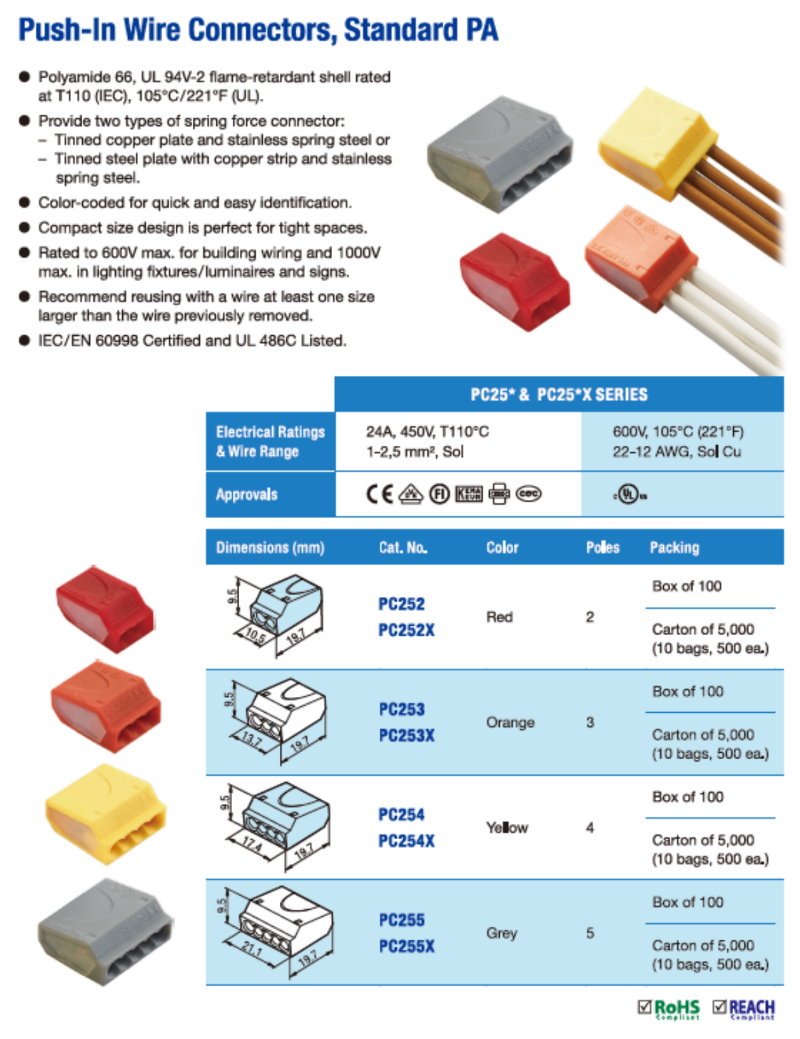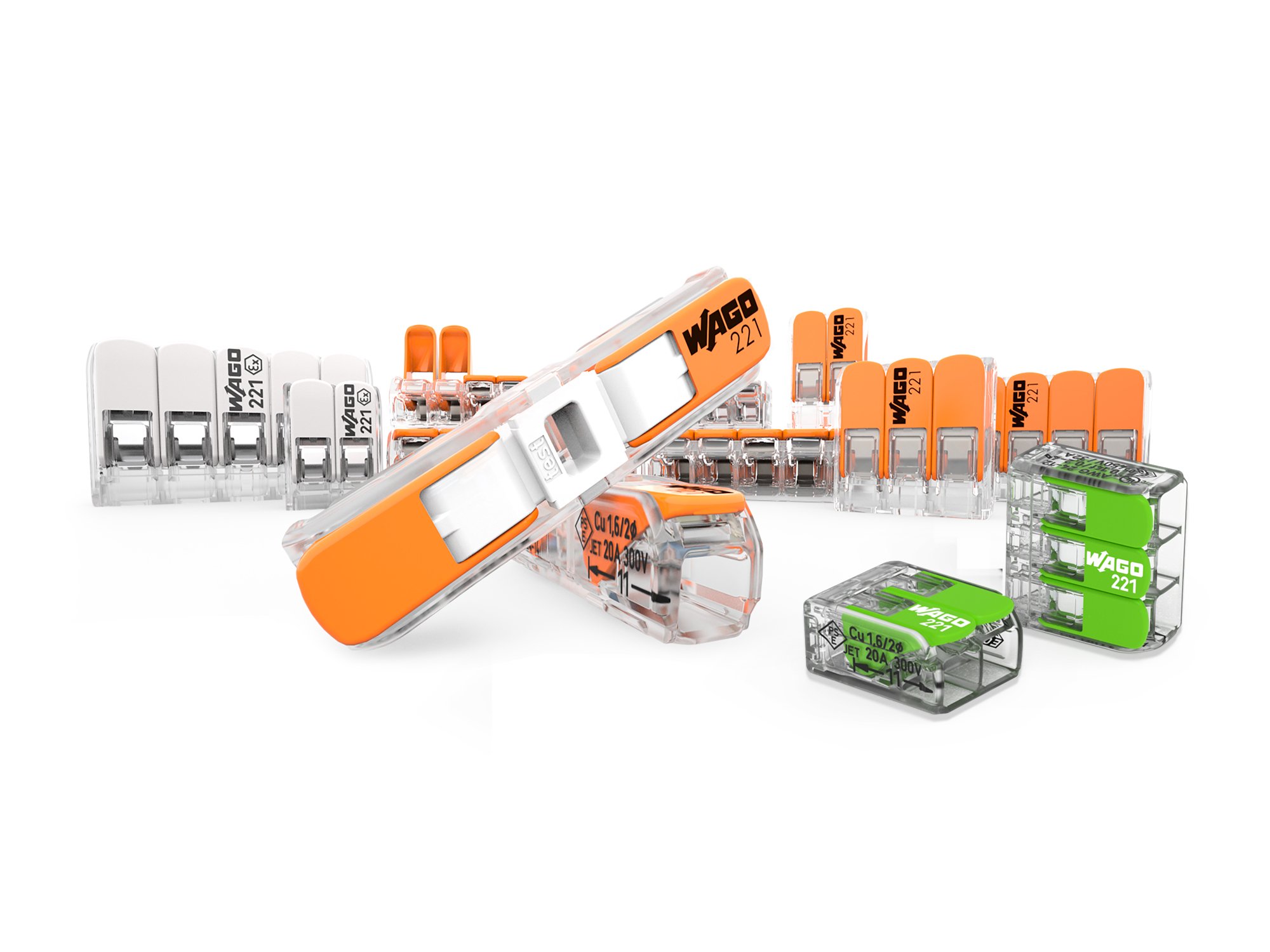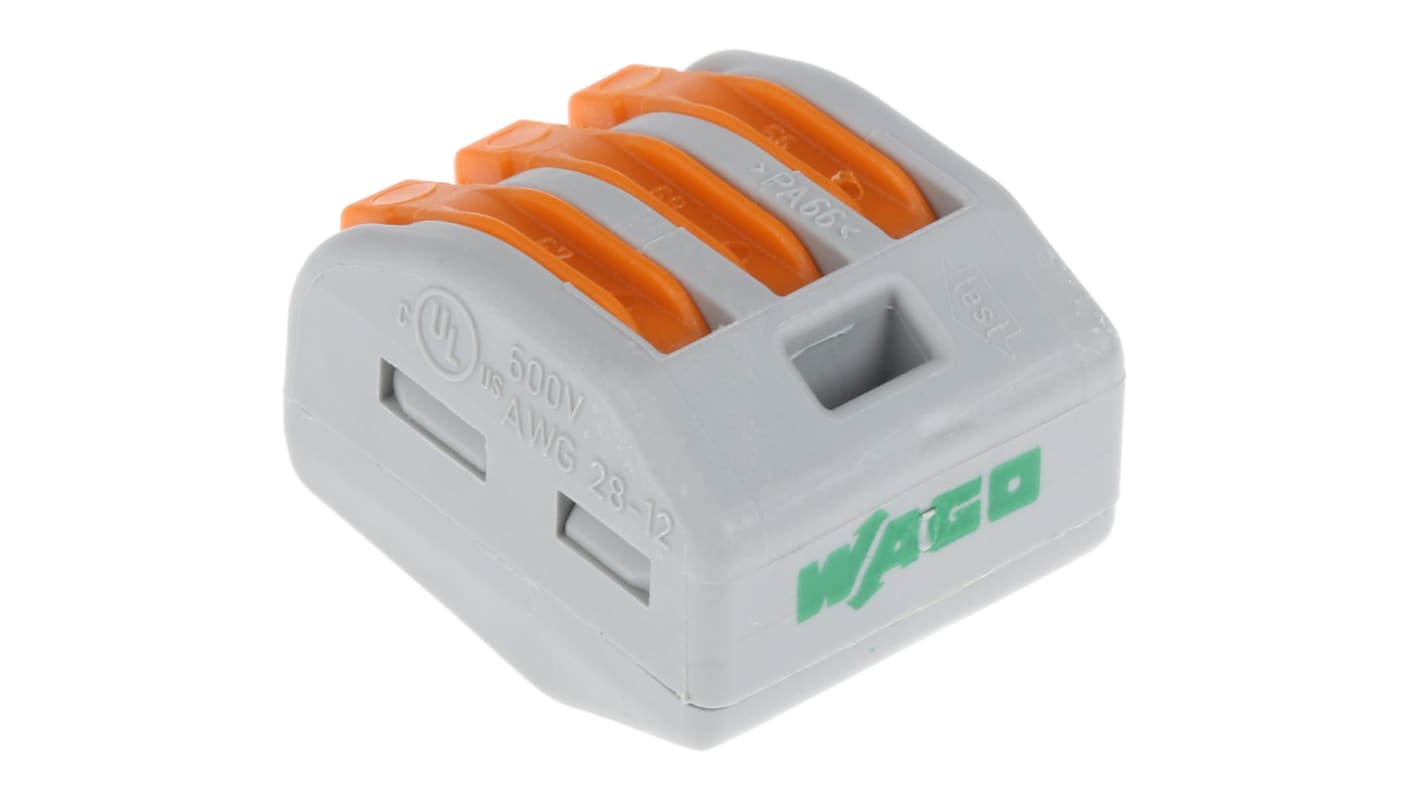I try avoiding the use of any connector that is stab or snap/pinch such as wagos especially if theres going to be high amp draw. It's funny that back stabbing receptacles are so frowned upon yet push connectors and wagos are nothing more than a back stabbed device, but no one thinks twice about using those connectors. Where the push in stab style connectors really shine are "relamping" fluorescent fixtures with new ballasts or rewiring for LED.
Backstab outlets are a compromise reusing the same brass as a leaf spring that was used in the electrical contact. That’s the really weak point, where the spring pressure reduces over time. A better mechanism would use something like real spring steel pressing down on a plastic clamp, which is what WAGO lever connectors do.
Granted, wire nuts are cheap and effective. However, I see a benefit in lever connectors where the cause less damage to the conductors and they accept a wider range of wire sizes.





